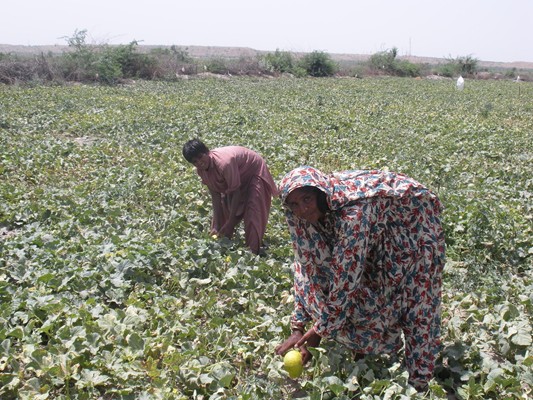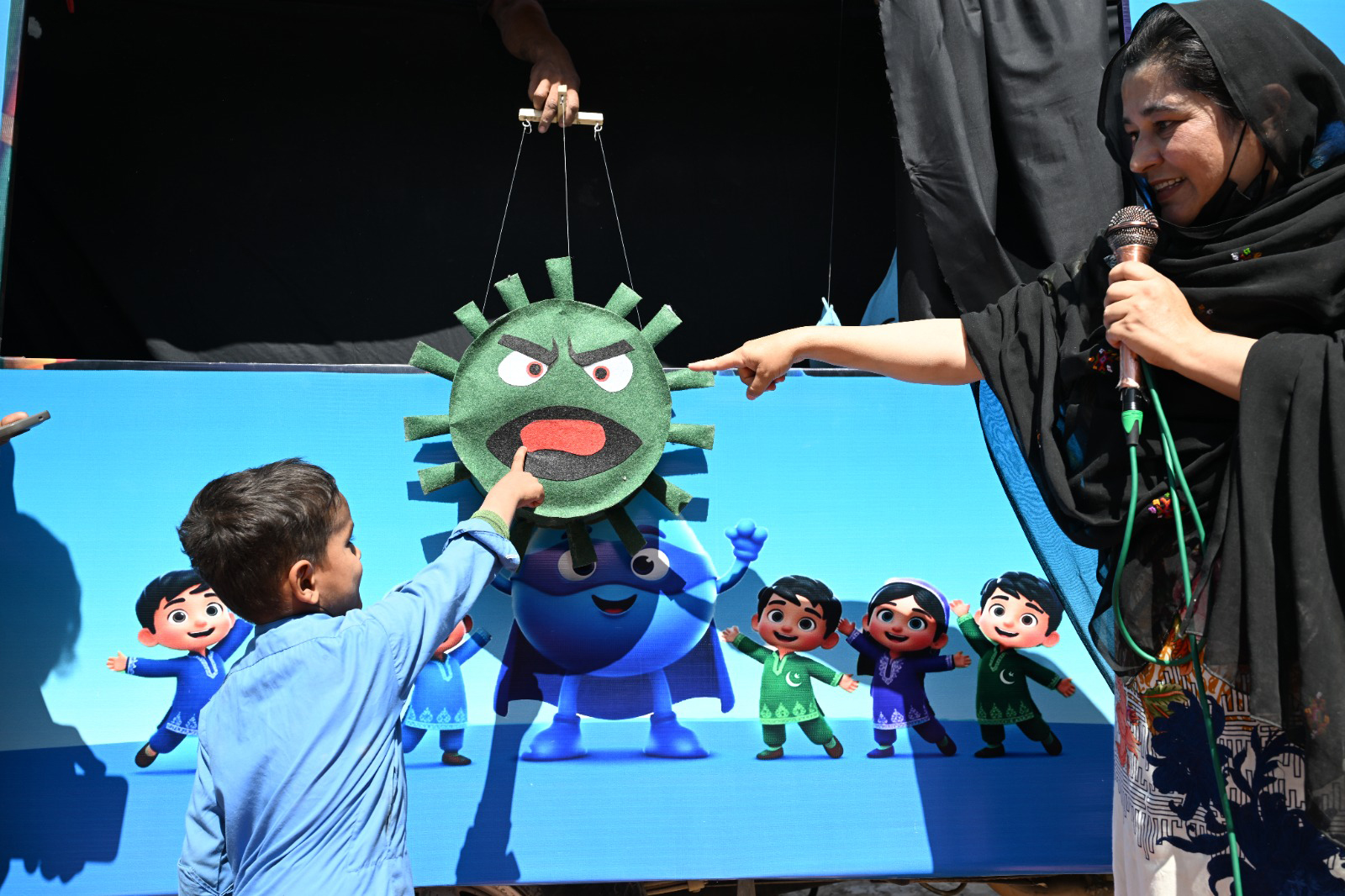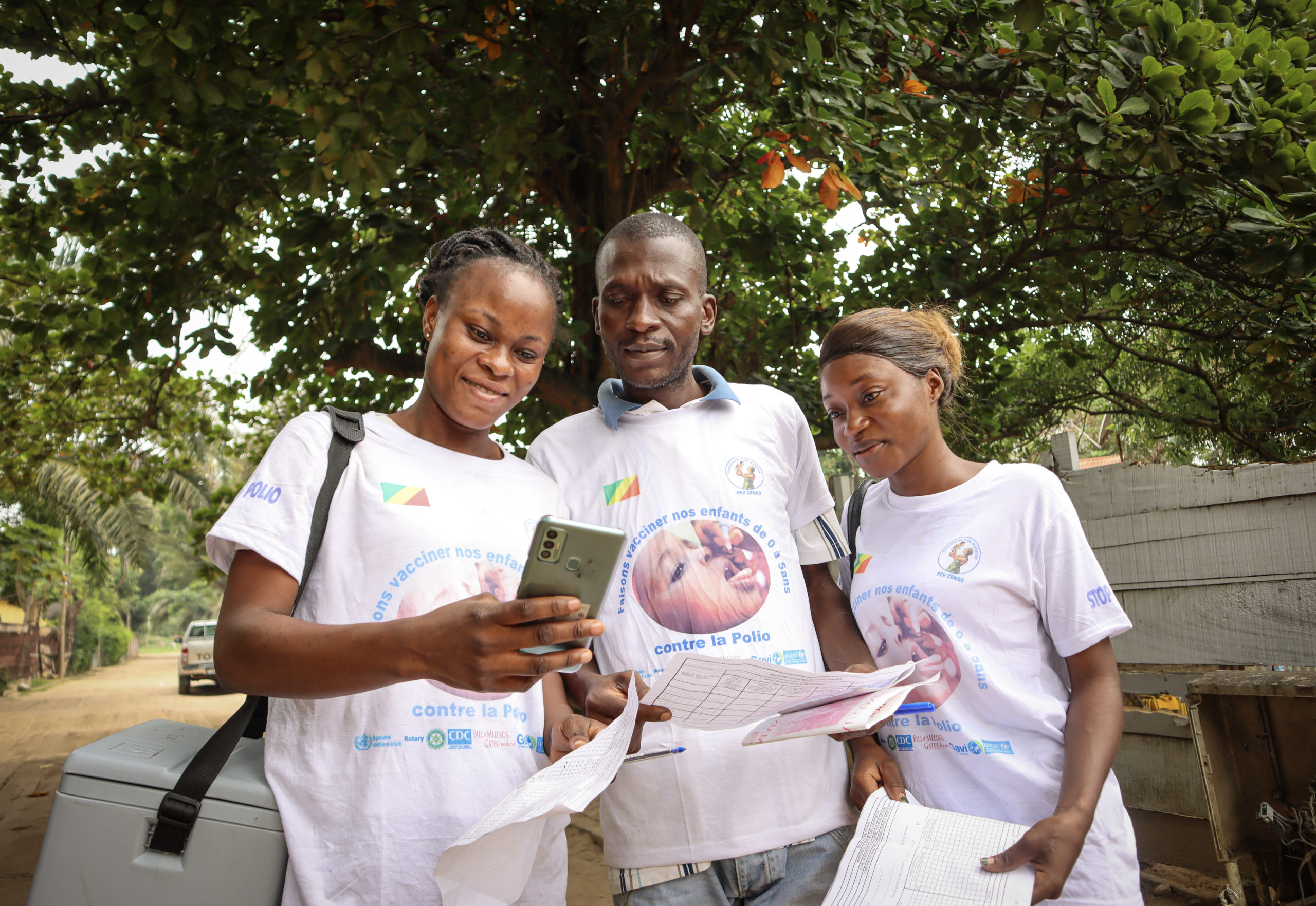
In the scenic Sanwan village, close to the Indus River in Thatta district, Sindh, melon growing is a common occupation for local farmers. Thirteen-month-old Sundar Lal’s family have been known for their melons for years. It takes three months to harvest the melons: “We have already gathered two crops and the final one will be ready in a month’s time,” Premi, Sundar Lal’s grandmother, explained. However, it is unlikely that Sundar will be able to play a role when he’s older in the harvesting of the melons: Sundar was diagnosed with polio in January of this year.
It is families such as Sundar’s that highlight the myriad logistical and operational challenges of nationwide vaccination campaigns.
The young boy got off to a difficult start in life, being born in an Internally Displaced Persons (IDP) camp after the 2010 floods in the Hyderabad district. Even so, his mother, Bhaga, was able to take Sundar for routine immunization at a nearby EPI centre. Polio drops, however, need to be administered at least four times and in places with poor sanitation, or a high incidence of malnutrition or diarrhoeal diseases, the vaccine can be less effective than elsewhere.
Because of this, supplementary immunization activities (SIAs) are used to boost the immunity of the population to as high a level as possible. However, an investigation into Sundar’s case showed that vaccination teams assigned to the area did not follow up after the child was registered as ‘not available’ during the campaign, citing fear of stray dogs loitering in the neighbourhood.
This was not the only flaw in the vaccination campaign which was supposed to reach Sundar. During the planning, three separate areas were reflected as one in the micro-plan and assigned to a single person, doubling the number of children for them to cover.
Although it is too late for Sundar, the Global Polio Eradication Initiative is moving faster to identify and solve these issues in order to ensure cases such as his do not happen again. For example, in West Africa, insecurity in Mali, the Sahel crisis and the upcoming rainy season have resulted in large scale population movements. Nevertheless, immunization campaigns continue to take place in refugee camps in countries bordering Mali, including in Mauritania and Burkina Faso, and in internally-displaced persons camps in Mali itself. Furthermore, population movements are actively tracked and mapped, with health posts set up at key border crossings, gathering sites and in hard-to reach areas.
Meanwhile in Pakistan, a WHO and UNICEF staff surge is actively reviewing vaccinator team performance and composition, improving micro-planning and fixing the ‘basics’ of good campaign operations. This new approach is already having an impact: there have only been two more cases of polio after Sundar in Sindh province for the first six months of this year, compared to 14 for the same period last year.



